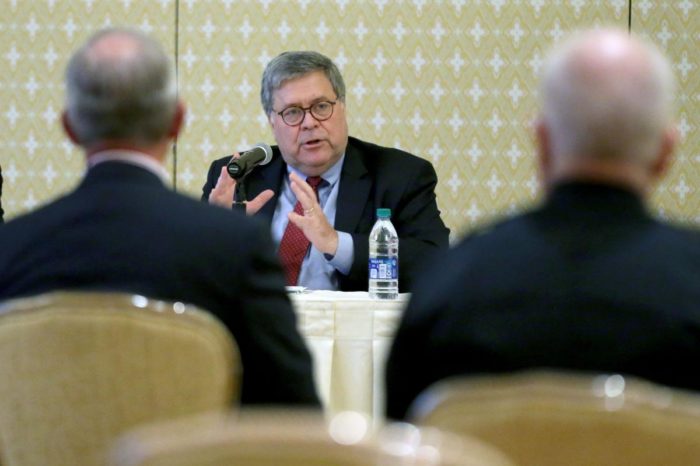NEPA Reforms Fix Broken Permitting System

By Terry M. Jarrett, Healy Law Offices, LLC
From 2007-2013, I served as a commissioner on the Missouri Public Service Commission. During those six years, my fellow commissioners and I were focused on making sure our state had ample electricity around the clock. And we continuously looked for ways to ensure that electricity remained affordable throughout the state – particularly for working families and small businesses.
Keeping electricity reliable and affordable is even more complicated now than when I was a commissioner. The energy sector is rapidly evolving as the use of renewable energy, like wind and solar, grows. Advances in electric vehicle and battery storage technologies continue to progress.
And, while the use of coal to generate electricity has decreased, it remains a vital component of our energy strategy. According to the U.S. Energy Information Administration, in 2019, coal accounted for 23.5 percent of the electricity generated in the United States, while renewable energy (including hydropower) generated 17.5 percent. In my home state of Missouri, coal power plants provided 73 percent of the net electricity generation in 2018, and more coal was consumed for generation in Missouri than any other state except Texas.
One often-overlooked fact about renewable and coal generation resources is that they both rely heavily on mining. Wind turbines and solar panels, as well as lithium-ion batteries and electric vehicles, require mining key minerals like lithium, cobalt, nickel, graphite, molybdenum, iron, neodymium and copper. Coal is extracted from the earth either by surface mining or underground mining.
Mining requires federal permits to conduct business, and the permitting process has become increasingly challenging. Mining on federal lands accounts for more than 40 percent of all coal produced in the U.S. Nearly 90 percent of federally produced coal comes from mines in the Powder River Basin in Wyoming and Montana. More renewable energy means more solar panels, wind turbines, electric vehicles, and large-scale batteries. That also means more demand for the mined metals and minerals that make those technologies possible, and our nation is already dependent on other countries for many of them.
Mining companies regularly identify permitting delays as their top concern. Industry-funded research shows obtaining a mining permit in the U.S. takes nearly 10 years on average,
one of the longest timelines in the world. Creating a more efficient and timely permitting system is critical to improving the competitiveness of the domestic mining industry, job creation, and decreasing reliance on foreign resources.
In January 2020, the Trump administration proposed the first major changes to the National Environmental Policy Act (NEPA) in more than four decades, seeking to streamline the permitting process for infrastructure, mining and other industries.
Enacted into law in 1970, NEPA requires federal agencies to analyze the environmental effects of their proposed federal actions. This means virtually any project that requires a federal permit or authorization could be required to undergo a NEPA review, including infrastructure projects like power lines, power plants, water infrastructure, railroads, manufacturing plants and many others that require permits from the federal government, such as mining and federal land leasing.
Unfortunately, NEPA has become more burdensome and time-consuming since it was first enacted, adding endless delays to infrastructure projects. NEPA reviews have exploded into a multiyear process that lacks certainty and transparency. Few understand the criteria for approval, and if approved, how long the process will take. This uncertainty means that many infrastructure projects are never even considered.
Another cause for delay is that NEPA analyses are frequently litigated. Federal agencies ultimately prevail in many cases, but the cost and complexities of NEPA reviews and court cases make it very challenging and sometimes impossible to plan, finance and build projects.
The President tasked the White House Council on Environmental Quality (CEQ) with studying the problems with NEPA and coming up with solutions. The CEQ found that the average length of an Environmental Impact Statement (EIS) is over 600 pages, and the average time for federal agencies to conduct these NEPA reviews is four and a half years, with reviews for some projects taking much longer.
CEQ’s press release announcing the reforms noted that NEPA regulations date back to 1978 and have not been comprehensively updated in over 40 years. Acting Office of Management and Budget Director Russ Vought stated: “NEPA has been used as a tool to slow or completely kill important infrastructure projects across the country.”
The CEQ’s proposed reforms are intended to create a more efficient regulatory process by establishing time limits of two years for completion of environmental impact statements and one year for completion of environmental assessments. The proposal also specifies page limits, promotes information sharing through modern technology, and better defines environmental effects and other key terms. Agencies would be allowed to establish procedures for adopting another agency’s determinations to increase efficiency. And, the proposed rule would improve collaboration with state, local and tribal governments. Reforms also intend to reduce litigation by revising definitions of critical terms and preventing legal challenges until a final decision is issued.
One important – and controversial – reform is how an agency reviews and considers environmental impacts. Under the current version of NEPA, this review includes the cumulative impact of a particular action and an assessment of how it may contribute to climate change and other long-term, indirect environmental issues. Under the proposed reforms, NEPA would not require agencies to consider the cumulative effects of new infrastructure. This is expected to simplify the definition of environmental effects and clarify that effects must be reasonably foreseeable and require a reasonably close causal relationship to the proposed action.
Representatives of both renewable energy groups and coal mining interests, as well as many other industries, applauded the proposed NEPA reforms.
The CEQ will review public comments on the proposal submitted by the deadline of March 10, 2020 and may consider changes before it issues the final rule, which will go into effect 30 days after publication in the Federal Register.
Terry Jarrett is an energy attorney with Healy Law Offices, LLC.








